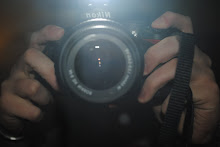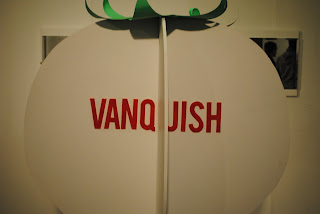
I have outlined and analysed two texts here that I would use as a basis for writing my dissertation. I am hoping to to look at the importance of a companies self created aesthetic and how this alters our perceptions of them.
1st Text
Would You Like Umlauts With That?
Bruce Campbell
The main purpose of this article would be to bring to light some of techniques used by companies to create a foreign identity for a brand or business as a marketing tool. The author shows how the Umlaut (ü) has been used in foreign branding to give brands the false appearance of being authentically from another country. This technique has been used by many companies to generate the feeling of class or sophistication for a product that if it was marketed from its original country of origin, would not be so successful.
The key question being addressed here by the author is what effect does the use of a self-generated marketing technique have on people’s perceptions of a product. Does the use of a German/Austrian/Swiss symbol mean that people are more willing to pay extra for Häagen Dazs ice cream as they perceive that there is added quality because they are buying a ‘foreign’ import?
Some of the key information shown in this article is such information of the origin of the Haagen Dazs Company, it comes from the Bronx, New York (1961), and its name is “totally fictitious name with no meaning in any European language”. The creator Reuben Mattus used a Scandinavian theme but of the 700 stores they now have in 54 countries, none are in Scandinavia. The article outlines the meaning and correct use of an umlaut (ä), as well as other example of its uses in foreign branding.
The author uses the IKEA’s “the unböring manifesto” which was a supplement included in “trendy shelter and fashion magazines” such as vogue, Dwelle and Metropolis. The supplement featured advertising tag line of “What is unböring?”. The author uses this as an example of the incorrect grammatical use of the umlaut in an advertising sense as it catches the eye and appears to be used in a word that isn’t English.
In this article the author takes quite a satirical view of the use of this foreign branding but however infers that the companies that have applied these techniques have in many occasions been successful when using such strategies. He does though conclude that in certain circumstances this technique has been applied but not fully understood (see Mötley Crüe, where pronunciation by German fans is “Mutley Cruh!”).
A key concept that Campbell outlines in this article is that if we see a word with a foreign spelling or grammatical addition such as the umlaut then we will initially associate a foreign identity with it. And with this we will associate the values of that culture. If a Manchester based kitchen designer uses the exterior front that gives the appearance of a German company then we will initially associate their strong, robust, efficient connotations with Manchester based companies product.
The author in some senses though is taking for granted such assumption as that this approach is always successful. There may be many cases, especially now in this current climate where this is unsuccessful because of that want for more home grown products therefore people may be less reluctant to buy “foreign” as they once would be.
If we were to take the author’s line of reasoning seriously but more extreme then by all means all companies should apply this tactic to their own marketing strategy. All cars would be German made, all appliances Japanese and all furniture Swedish and so forth. Although if this tactic was never applied then there would possibly be many companies that offer good quality products go out of business as they would have to drop their prices to compete with other home grown companies that don’t deploy such a savvy business approach.
The author is coming from the point of view that when this foreign branding technique is used properly that it can be extremely beneficial to the immediate impact of a brands weight in it’s market place. The author also reiterates that a company doesn’t necessarily need to be 100% accurate when advertising themselves as foreign in their own country as is the nature that they are foreign in the eyes of their customers.
2nd Text
The Advertising Handbook (Chapter 4 – Advertising and Marketing)
Sean Brierley
I have focused mainly on chapter 4 of Sean Brierley’s “The Advertising Handbook” as it relates closely to my chosen topic. I may relate back to other areas of this text for future references regarding my dissertation.
The main purpose of this chapter is to give a wide scale overview of the topic of advertising and marketing on the whole. The author has outlined the key element of what good advertising/marketing consists of and has shown how these have been used in general practice via a number of prime examples.
There are a number of key questions that the author addresses here. He firstly looks at what are the main components of the marketing mix, them being Price, Product, Place and Promotion and goes on to explain in depth why these are key. He then moves on to ask ‘Why use advertising?’ which he answers with three real life examples of positive advertising.
The most important information conveyed by the author is on his stance of the marketing mix. All four are equally important to advertising/marketing success. Red Rock cider is used to as an example of how its advertising was effective but because of underestimated stocking, the product sold out after 3 days, an advertising success but a marketing flop. A key point brought up is that advertising does not have a direct discernable effect on sales, this meaning that it can only contribute towards success.
The author uses a great deal of examples to support his claims those being Budweiser, Barclaycard and Packwood advertisement campaigns. He also uses reference points such as the Principals of Marketing, The Times and Marketing Week to name a few.
The main conclusions that are drawn from this particular part of The Advertising and Marketing Handbook are that advertising and marketing are very different entities. Also that the success/failure of a product can easily be determined if the four P’s are all taken into consideration.
The key concept that we need to understand is that advertising is only one element of the marketing mix and that it works along with the four P’s. What the author is getting at is that if we do not adhere to these rules then the failure of a product is more likely to occur. This is due to all components being equally important.
The main assumptions underlying the authors thinking is that if the rules of the 4 P’s and advertising are key to success and if they are not followed then the product will be a failure. It is implied that this is the case in the text however there may be instances where a different formula has been used but and positive results have been yielded. If we were to take this line of reasoning seriously then there may be cases where either advertising or marketing is bypassed and would possibly lead to the failure of the product.
The main points of view that are stated are the importance of product pricing, the product and service, product placement and product promotion. Also the author reinforces that these marketing techniques need to be used in conjunction with advertising methods.




















